Those with little to no understanding of print processes have still probably heard the terms bleed and crop marks. Less familiar, but no less important, are registration marks – key for any design encompassing more than one colour.
While the name may not ring any bells, the markings themselves resemble something we all recognise… targets.
That’s fitting as it’s exactly what they are. But rather than aiming to cause maximum destruction, in this instance, it’s quite the opposite.
Why Do We Use Registration Marks?

When utilising several different colours, each is printed separately using a print press. This naturally means different plates are required for full colour designs.
In order to realise the design as it was intended, said plates need to be placed on top of one another. While that sounds simple enough, misalignment is common and can lead to all kinds of errors. Failings may include ink appearing in areas it shouldn’t, too much print or, just as bad… too much white space.
It’s also very easy to mistakenly print elements side by side when they should be on top of one another. Images can even appear blurry… a mishap many leading newspapers still encounter today.
The inclusion of registration marks, within the margins of each plate, help guide operators and combat those problems.
While various registration marks can be deployed most gravitate towards targets shown in black. It goes without saying, these should be in the same position for each plate to guarantee consistency. If all colours are printed and the crosshairs of your targets make for a solid black circle, you can be confident you’ve printed it correctly.
It’s worth noting registration marks can have crop marks added to them and will ultimately be trimmed off the final piece.
Design and Print Process
Having covered the basics, let’s detail the actual process… from design to print.
When readying visuals in software such as Circuit, PhotoShop or InDesign, users have the option to set registration marks. They can do so per layer, unchecking certain tiers of the artwork to insert markings at each level (or colour).
One-by-one they can bring layers back into focus and line up their respective registration marks. It’s these signposts that will guarantee the alignment of plates with one another and, ultimately, your chosen substrate.
This helpful video shows how’s that’s done in Circuit…
On receipt of designs, professional printers tend to separate the job from a digital file to a plate. The plate will include the set of markings they’ll use to create precise symmetry.
A growing number of modern printers boast presses that come with their own sensors, technology that reads the location of registration marks and automatically ensures ink is laid down properly, plate by plate.
Smaller printers though still rely on operators managing this themselves and adjusting registration accordingly. Screen printing is an example of registration performed manually.
Gradually, inks are applied on top of each other, along with the target registration marks. The latter should line up, so they become one single target (in thick black). If that’s not the case, the registration is clearly off, and adjustments will need to be made by hand.
Types of Registration Marks

As mentioned, there are various types of registration mark you can add to PDF files and plates respectively. A quick Google search will reveal possible options, most of which can be downloaded royalty free and added to your artwork.
Though the target sign has become the go-to, some designers prefer to use basic crosses, others squares and some elongated centre marks. There is no right or wrong answer, just be sure any printer you partner with is left in no doubt as to what they represent.
So, in short, registration refers to the alignment of different inks intended for printing. The quality of your work is often reliant both on their presence and their accuracy.
Not only do they assist printers in realising the perfect design, they allow them to do so in the shortest time. Indeed, these small markings go a long way to reducing waste, enabling printers to fulfil their brief at the first time of asking.
You can find more helpful design and print tips by visiting the Evans Graphics blog.


